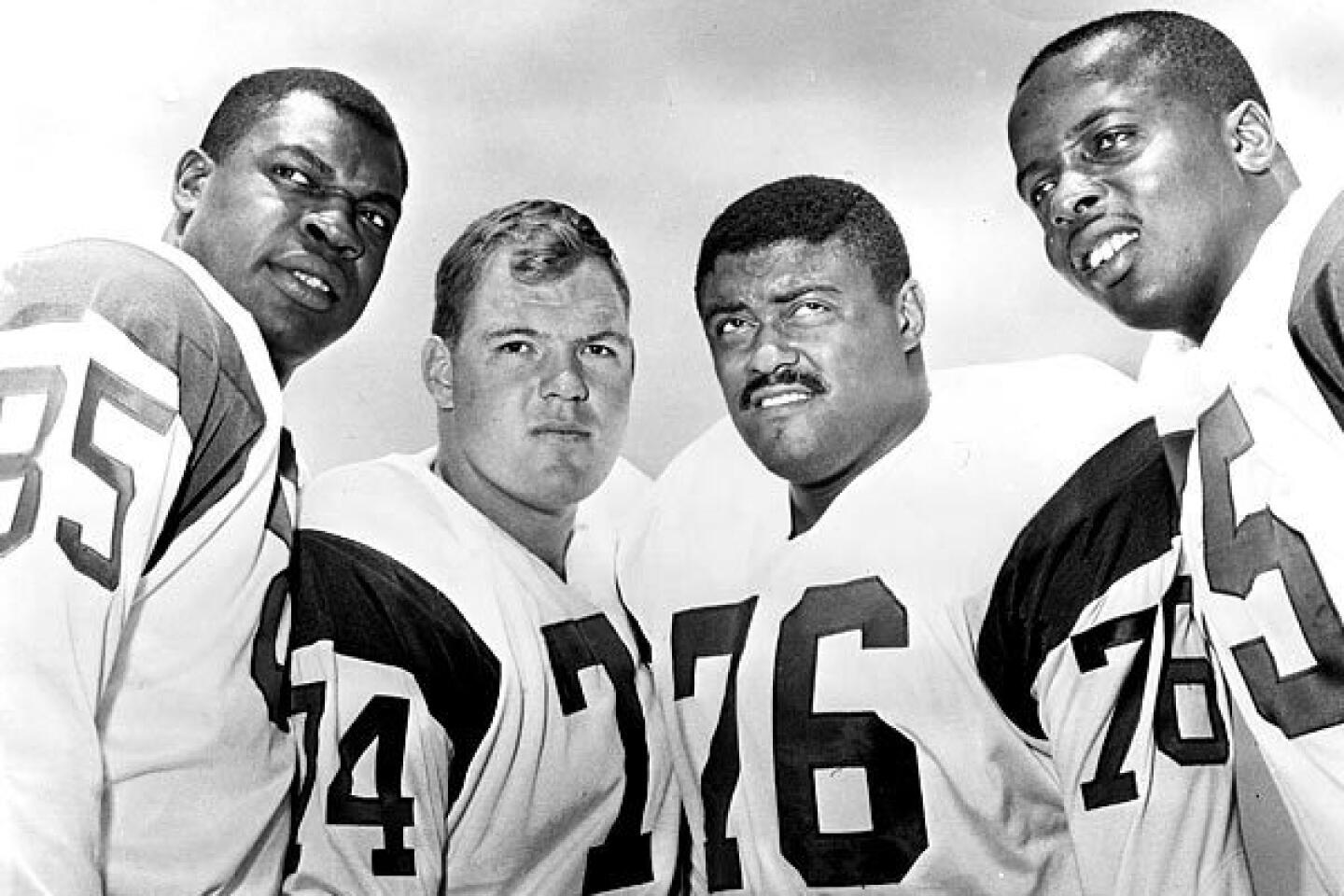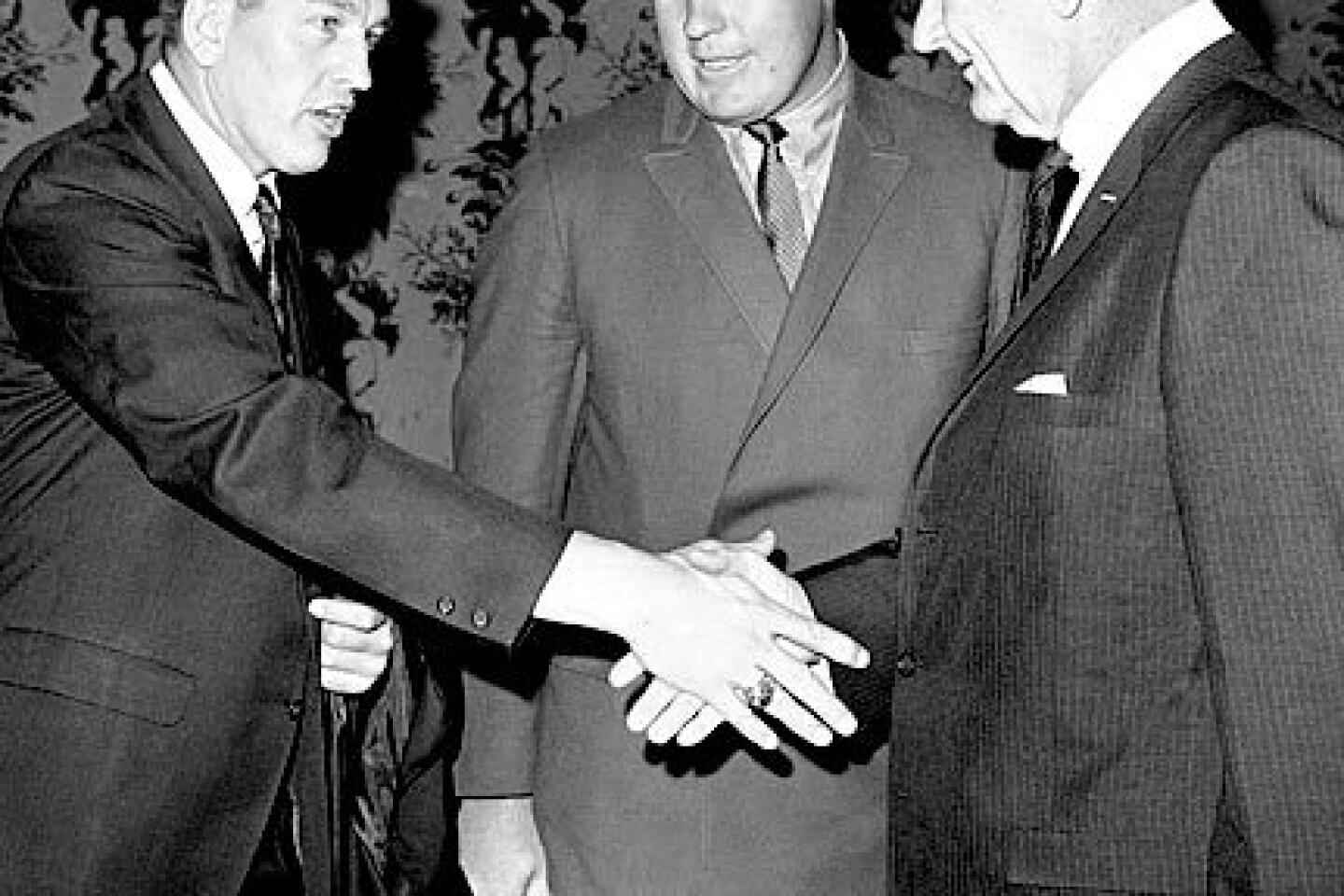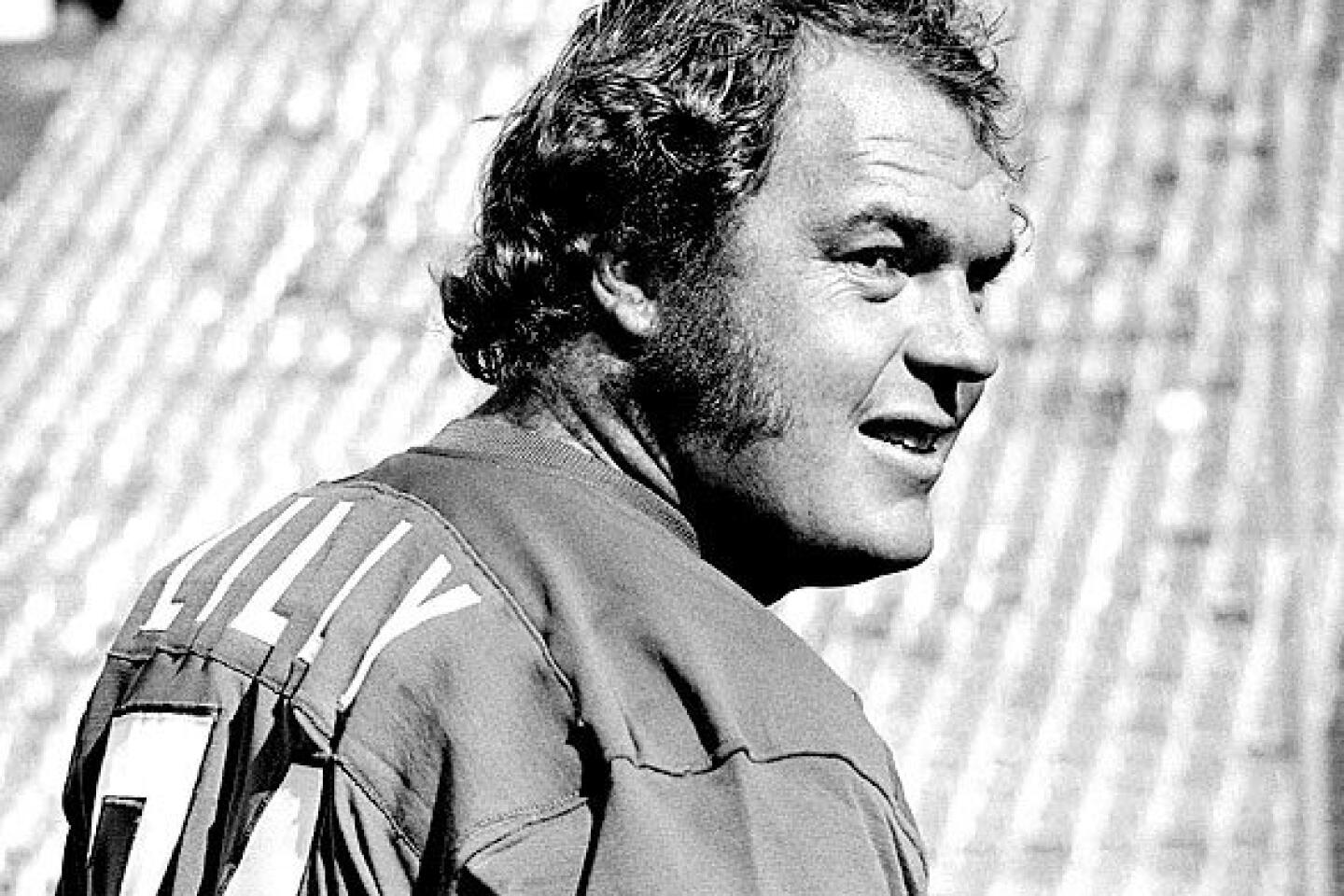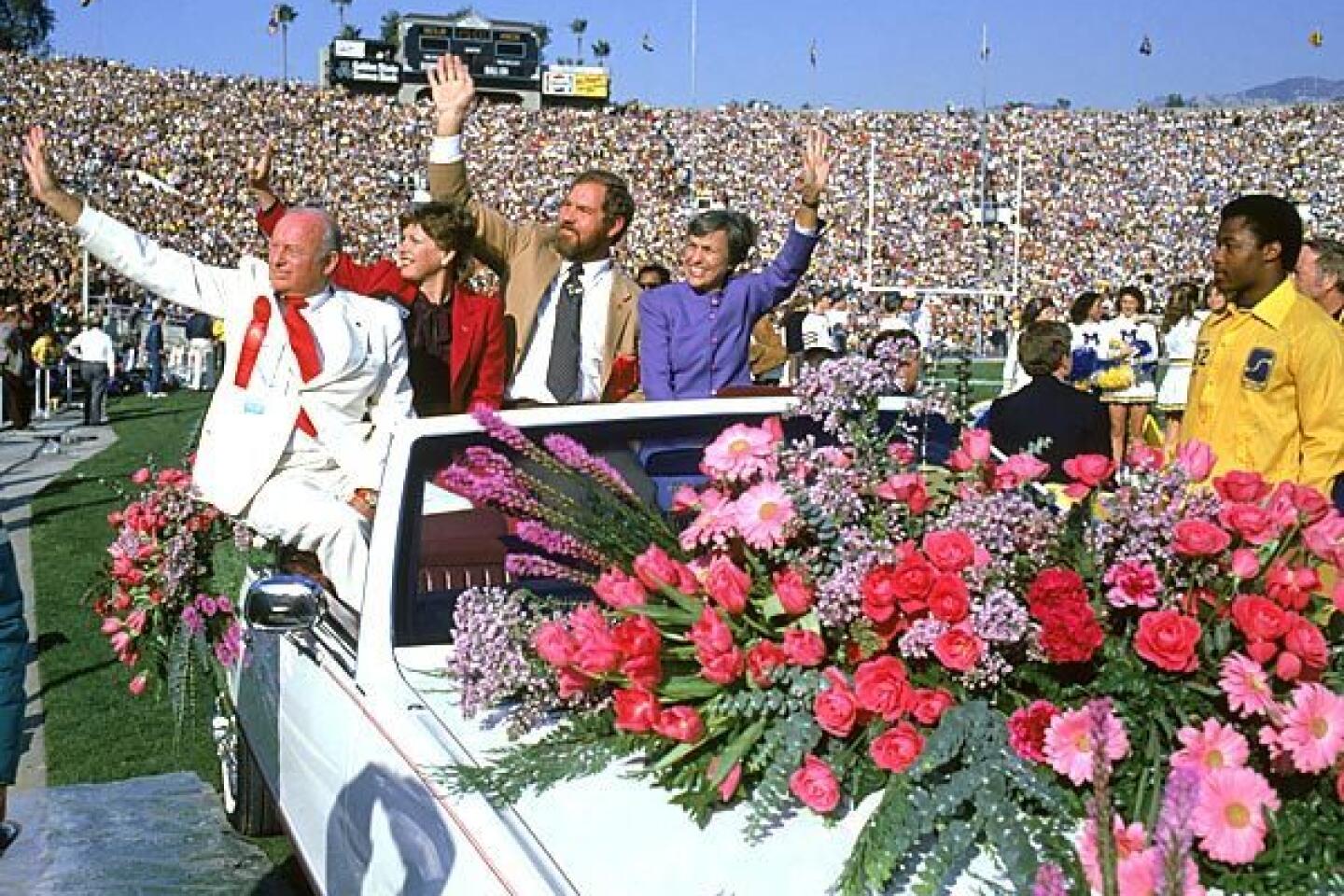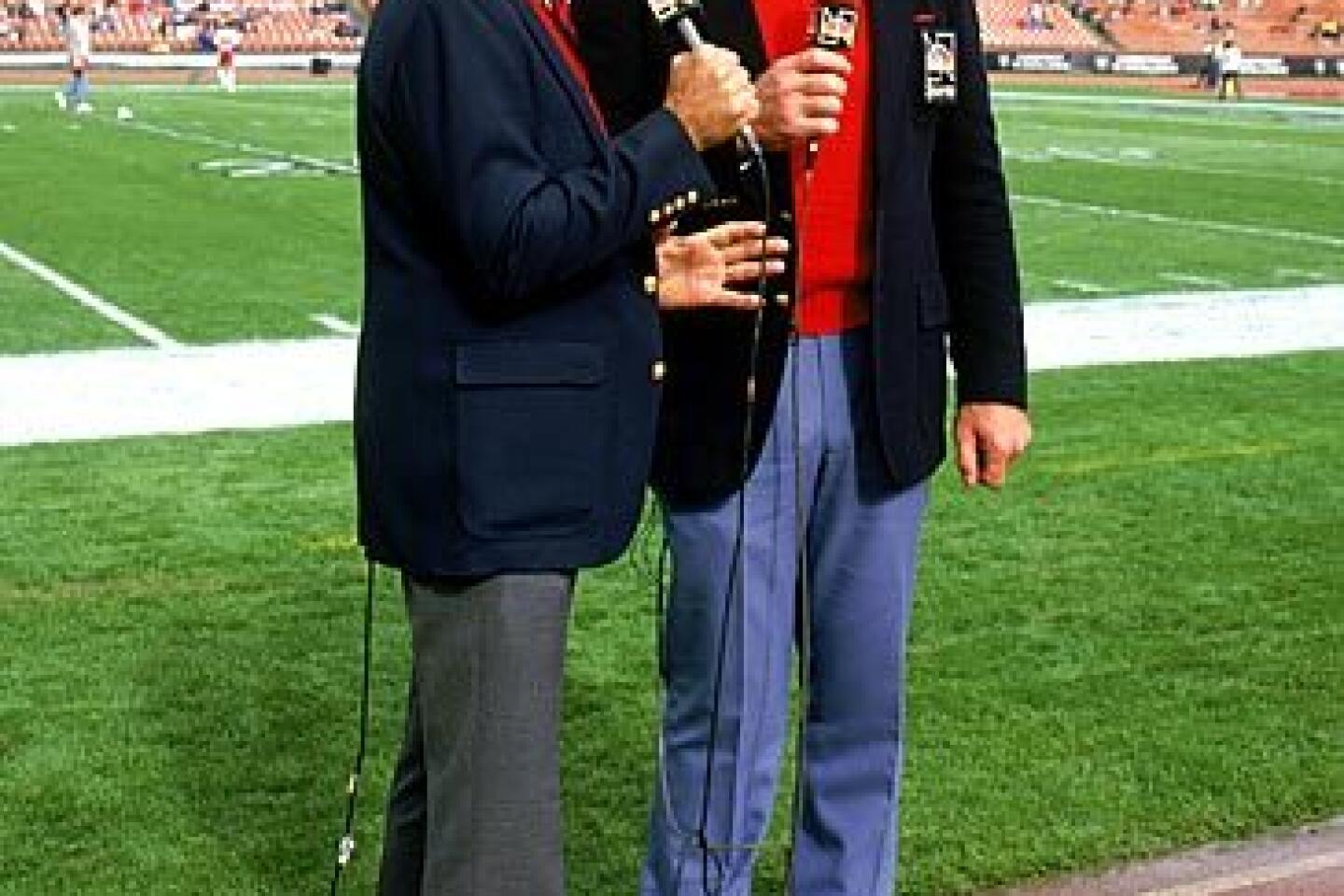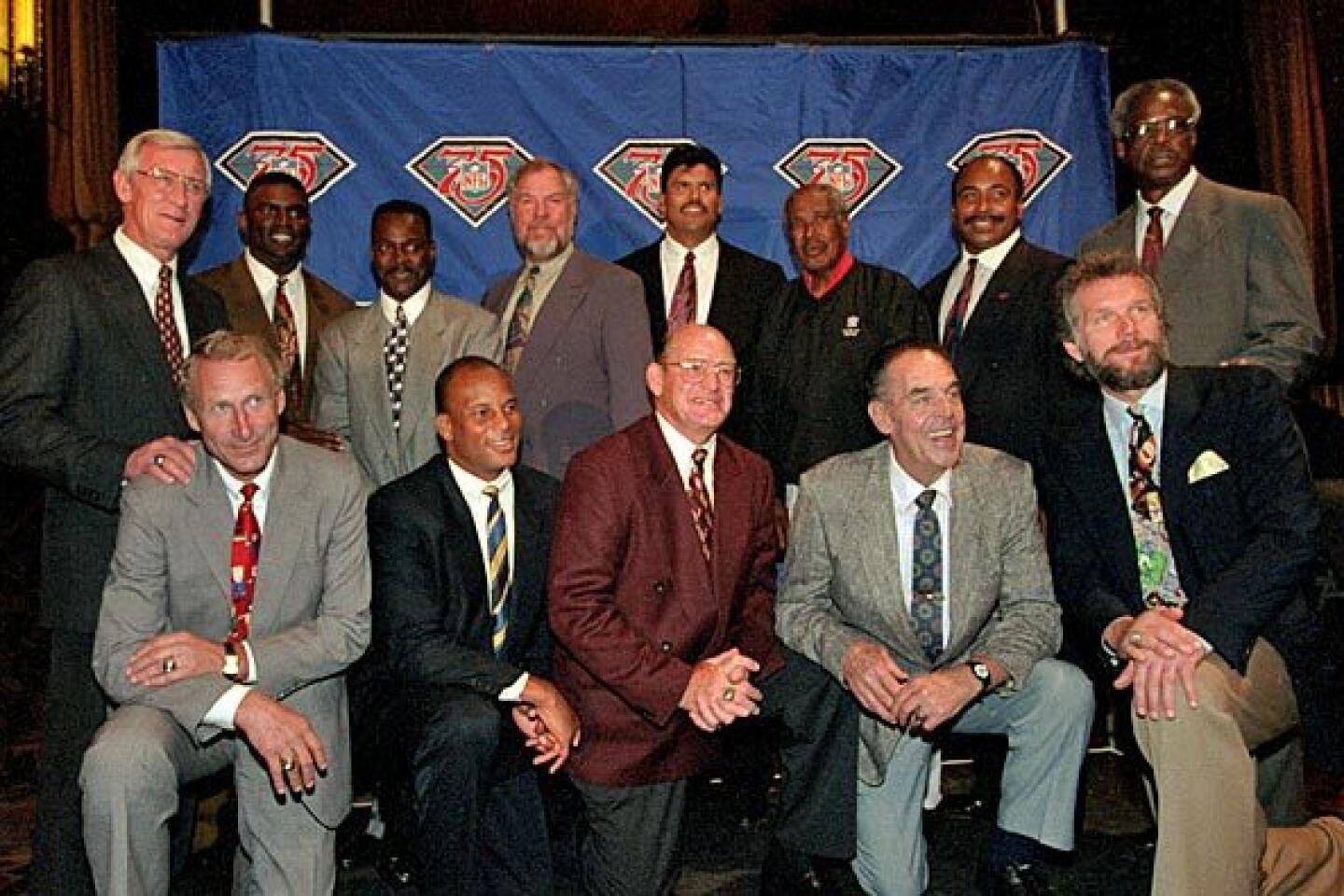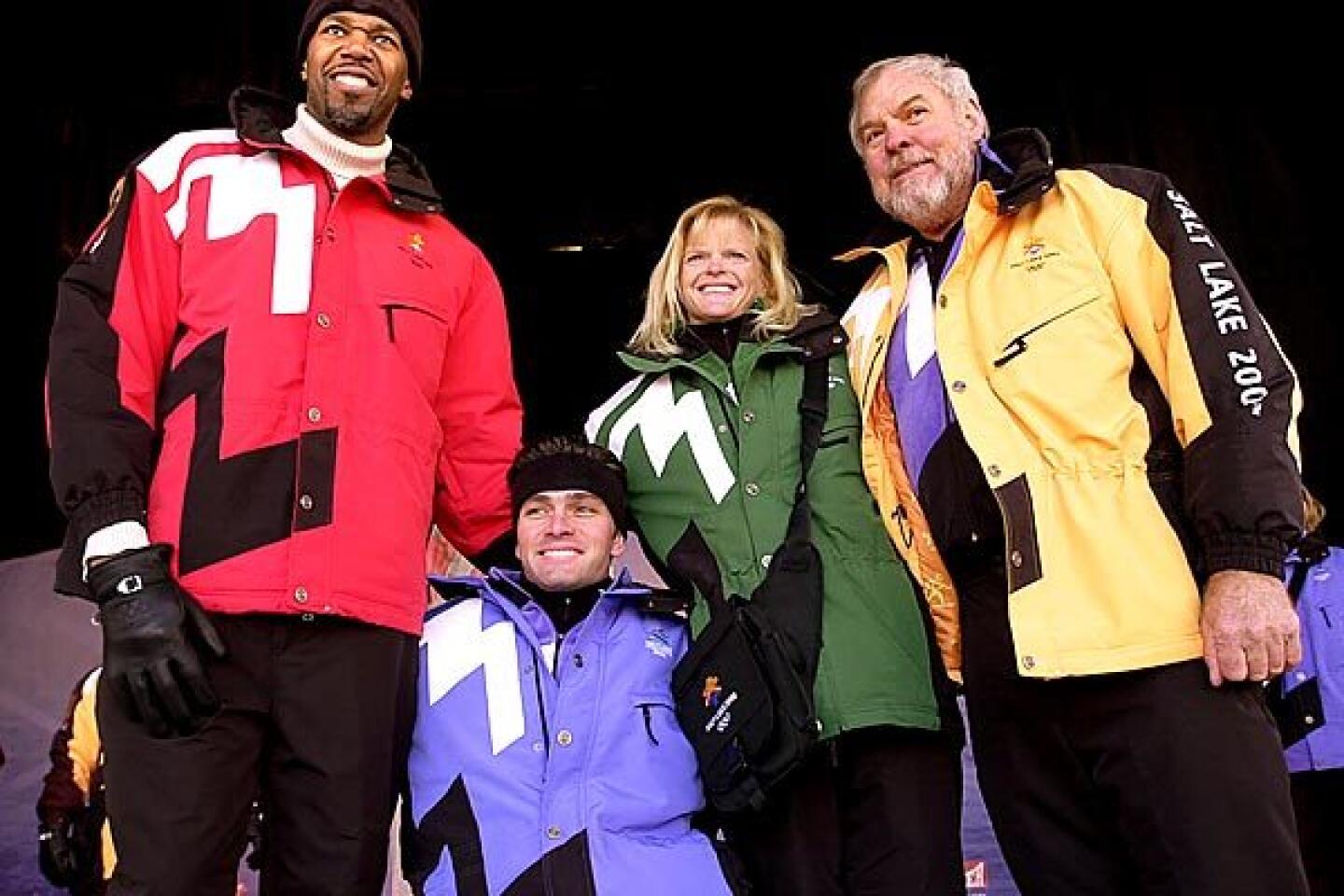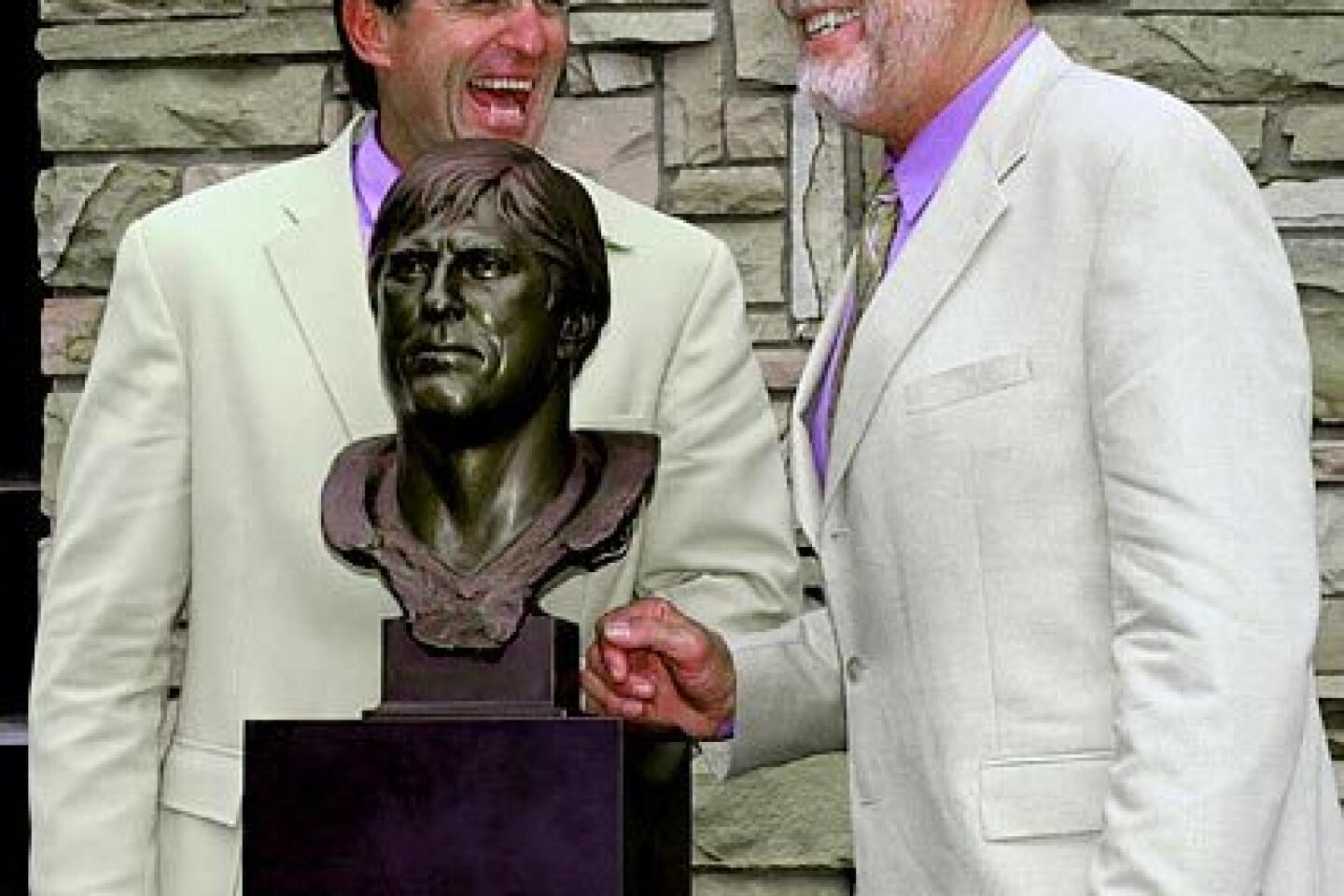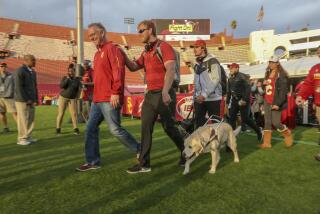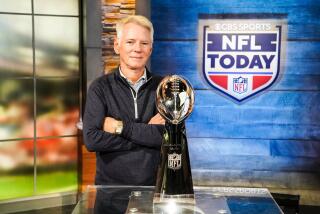Merlin Olsen dies at 69; Hall of Fame football star later became actor
- Share via
Merlin Olsen, a Hall of Fame defensive lineman with the Los Angeles Rams who was a charter member of the team’s famed Fearsome Foursome, then made a remarkably smooth transition into careers in broadcasting and acting, has died. He was 69.
Olsen died early Thursday at City of Hope hospital in Duarte while surrounded by his family, his brother Orrin said. He had been diagnosed last year with mesothelioma, a form of cancer that affects the lining of the lungs.
Olsen played 15 seasons in the NFL from 1962 to 1976, all with the Rams. He was the league’s most valuable player in 1974 and appeared 14 times in the Pro Bowl. After retiring as a player, he spent 15 seasons as an analyst for NBC and CBS and acted in such television shows as “Little House on the Prairie” and “Father Murphy.”
“Merlin Olsen was an extraordinary person, friend and football player,” NFL Commissioner Roger Goodell said in a statement. “Merlin was a larger-than-life person, literally and figuratively, and leaves an enormously positive legacy.”
Said former Rams teammate Jack Youngblood: “He was compassionate, considerate, articulate, caring. He had all of the intangibles that anyone would want in a husband, a friend, a father. I can’t speak highly enough of Merlin Olsen.”
With the Rams, Olsen helped popularize the star power of defensive linemen who could sack quarterbacks. The Fearsome Foursome of Olsen, David “Deacon” Jones, Roosevelt “Rosey” Grier and Lamar Lundy, standout talents on mediocre teams from 1963 to 1966, used size, speed and skill to terrorize offenses.
“Our philosophy was that they can’t double-team all of us,” Olsen said in a 1985 interview with The Times. “Somebody would be one-on-one and he’ll get the quarterback. There were times, though, when teams would double-team all four of us or change their blocking patterns just to hold us down -- which was a nice compliment.”
At 6 feet 5 and 275 pounds, Olsen was a dominating physical presence at left tackle, but he also was known for his analytical approach to the game.
“I was amazed by his size just like everybody else, but more than that at his great intelligence,” former CBS analyst Irv Cross, who played three years with Olsen on the Rams, told The Times in 1982. “His ability to analyze the game was something everybody on the team recognized. It was just unbelievable that any one person would be gifted in so many ways.”
Merlin Jay Olsen was born Sept. 15, 1940, in Logan, Utah, the second of nine children of Lynn Jay and Merle Olsen.
He was a three-time academic All-American at Utah State, where in 1962 he won the Outland Trophy as the nation’s best interior lineman.
He graduated summa cum laude with a bachelor’s degree in finance in 1962 and later studied during the NFL off-season to earn a master’s in economics from Utah State in 1970.
Olsen was the third player picked in the 1962 NFL draft, right after his longtime Rams teammate, quarterback Roman Gabriel. Olsen immediately became a starter, but the team was dreadful, winning only one game in his rookie season.
The Rams didn’t begin winning consistently again until the late 1960s, and in 1968 the defense set an NFL record for yielding the fewest yards in a 14-game season.
Despite being on some good teams during the later part of his career, Olsen never made it to the Super Bowl as a player.
“That’s one goal I didn’t reach. But as a professional athlete, I reached or surpassed most every other [goal] a number of times,” he told the Salt Lake Tribune in 1994.
Olsen, who remains the Rams’ all-time leader in career tackles with 915, was elected to the Pro Football Hall of Fame in 1982, his first year of eligibility.
He quickly adjusted to life after football and was best known at NBC for his pairing with Dick Enberg, who used to call the Rams’ games on radio.
“He was so thoroughly prepared, he should have been a lawyer,” Enberg told The Times in 2006. “He was so competitive in all the good ways. . . . We all have the perfectionist complex, but he carried it out in the most noble and social way because he didn’t jump on anybody or walk on anybody to get to where he was. He did it all the right ways.”
Olsen’s contract with NBC included the chance to act.
“The first question I asked was where is the training program,” he said. “When I found out there was none, I began organizing my own.”
He found a willing mentor in actor, producer and director Michael Landon, who cast Olsen as Jonathan Garvey in “Little House on the Prairie,” an adaptation of Laura Ingalls Wilder’s books about growing up on the frontier. The former football player seemed right at home portraying a gentle giant.
“Merlin’s own character was such that you adapted it to his [television] character,” said Kent McCray, producer of “Little House on the Prairie” and “Father Murphy,” a 1981-83 series that starred Olsen as a frontiersman disguised as a priest who was trying to help a group of orphans. “With Merlin, what you saw was what you got. In many instances, it was difficult for him to get mad. By nature, Merlin is not that way. It’s impossible to think of him as one of the Fearsome Foursome.”
Olsen’s other television series included “Fathers and Sons” (1986) and “Aaron’s Way” (1988). He spent two seasons broadcasting at CBS after NBC hired former San Francisco Coach Bill Walsh to replace him as the network’s lead analyst.
Olsen also was a longtime commercial spokesman for FTD, the florist.
In December, he was honored at a St. Louis Rams game but was unable to attend. Earlier that month, Utah State announced plans to name its football field after Olsen.
Late last year, he sued NBC Studios and several other companies, alleging that longtime exposure to asbestos resulted in mesothelioma.
Olsen, who lived in Utah, is survived by his wife of nearly 48 years, Susan; his daughters, Kelly and Jill; his son, Nathan; and four grandchildren.
He is also survived by his siblings, sisters Colleen Davis, Lorraine Elzinga, Gwen Saltern and twins Winona Barrett and Ramona Whitaker, and brothers Clark, Phil and Orrin.
(Phil was a Rams teammate from 1971 to 1974, and Orrin also played in the NFL.)
Services will be private.
Times staff writer Sam Farmer contributed to this report.
More to Read
Start your day right
Sign up for Essential California for the L.A. Times biggest news, features and recommendations in your inbox six days a week.
You may occasionally receive promotional content from the Los Angeles Times.
